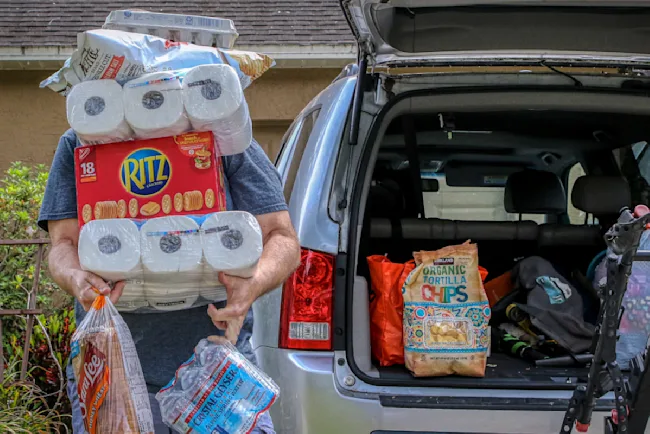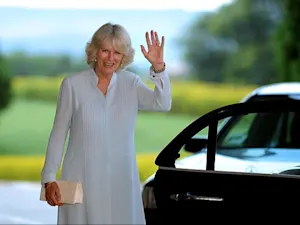
Melbourne Couple Faces Jail: Illegal Cabin Case
Flint house in the South Downs National Park, 2015. Photo courtesy of Marathon under CC BY-SA 2.0.
When U.K. couple Andrew and Debbie Melbourne decided to build their dream log cabin, they likely imagined peaceful days surrounded by the beauty of the South Downs National Park near Portsmouth. Instead, their unauthorized construction has reportedly landed them in hot water with local authorities, facing the possibility of jail time and hefty fines. How did a seemingly simple dream home project turn into a legal nightmare? Let's unpack the story, the rules they're accused of breaking, and what it means to build in a protected national park in Britain.
Who Are the Melbournes and What Happened?
The Melbournes, a couple from the U.K., purchased a half-acre plot of land near the village of Catherington for approximately £20,000, as reported by The Mirror. Their plan was to erect a prefabricated log cabin they bought online, envisioning a cozy, off-grid retreat with stunning views over the South Downs. The cabin was no small shed — it was reportedly a 1,200-square-foot, fully insulated spruce structure, complete with a kitchen, office space, shower rooms, living quarters, and a compostable toilet with its own water supply.
However, the Melbournes were unaware — or so they claim — that their land was inside the South Downs National Park, one of Britain's most protected natural areas. They also claim they did not realize that the property was subject to Article 4 restrictions, which remove certain permitted development rights, meaning they needed explicit planning permission to build anything on the land.
Despite multiple warnings reported from neighbors and local authorities, the couple bulldozed the hillside and carved a road leading to the cabin. They continued construction for months, even as enforcement notices reportedly piled up. Eventually, the East Hampshire District Council and the South Downs National Park Authority stepped in, issuing fines and ordering the Melbournes to dismantle the cabin and restore the land to its original condition within 56 days, according to the Mirror — or face enforcement proceedings in the High Court, which could lead to costly legal fees and even jail time.
Why Did the Melbournes Keep Building?
The couple maintains they were unaware of the stringent regulations protecting the land and the Article 4 status.
Speaking to MailOnline, Andrew Melbourne, a former music teacher, reflected on the ordeal saying, "We were led in blind basically. It's absolutely devastating, we spent two years researching what we could and couldn't put on the land," as reported by AlongWalker.com. He explained, "There were no disclosures that we were on the South Downs National Park. If we'd known we wouldn't have bought it. Absolutely I regret it, I wouldn't have done it, I've lost all my inheritance through this." Andrew also noted that the maps of the area are "quite ambiguous."
Furthermore, the plot was allegedly part of a contested land banking scheme, where developers buy large fields, subdivide them into smaller plots, and sell them off with the promise — but not guarantee — of future permissions. This scheme has been criticized for confusing and misleading buyers.
Debbie Melbourne opened up to MailOnline about the emotional impact these circumstances have had on their family, saying, "It would have allowed us to foresee our dream. It was something for our boys and a legacy," as reported by AlongWalker.com. Their plans reportedly included a space for a community garden, including plans to plant a dense small woodland known as a Japanese miyawaki forest.
What Are the Rules for Building in National Parks?
National parks like the South Downs, established in 2010, have strict protections aimed at preserving natural beauty, wildlife habitats, and cultural history. Construction and land alteration require planning permission from authorities because unrestricted building could damage the delicate ecosystem and spoil the landscape. Article 4 directions are legal provisions that remove certain automatically permitted minor changes, ensuring that even small works are subject to review.
Planning enforcement in such areas is thorough. Councils and park authorities reportedly monitor for unauthorized developments, issuing formal Notices when breaches are found. If owners fail to comply, authorities can escalate the matter to the High Court, which can impose costly fines and custodial sentences as a last resort. This enforcement ensures breaches are rectified, and the land is returned to its former condition, protecting the park's status for future generations.
The Legal Consequences and Restoration Process
In response to the Melbournes' defiance and the environmental impact of their construction, East Hampshire District Council fined the couple and ordered them to dismantle the cabin within 56 days. This order included instructions to remove all roadways, gates, fences, groundworks, and planting done on the site and restore the area to its original state. According to Andrew, the "cabin has been removed," as reported by The Mirror. Furthermore, to support full restoration, the council granted an additional 28 days beyond the demolition deadline, giving the Melbournes extra time to repair the damaged hillside and replant vegetation.
Failure to meet these deadlines could lead to enforcement proceedings in the High Court, with legal fees soaring and potential jail time looming. The Melbournes' situation is a stark reminder that even longstanding residents and well-meaning individuals must respect planning laws designed to protect shared natural heritage.
Reactions From Neighbors and Authorities
Local residents have expressed frustration and disappointment. Many describe the cabin as an unsightly intrusion spoiling the area's scenic views. Neighbors also criticized the clearing of trees during nesting season, which could jeopardize vulnerable local wildlife. They voiced regret that the Melbournes ignored legal advice and shifted explanations about their intentions throughout the saga.
Conversely, one local carpenter noted the cabin's natural appearance saying, "It blends into the landscape doesn't it? It's natural isn't it? But they didn't have planning, unfortunately," as reported by AlongWalker.com.
South Downs National Park Authority and East Hampshire District Council officials have emphasized the seriousness of the breach. They reiterated their commitment to using "robust enforcement action" to uphold planning laws critical to preserving the park's unique landscape, as reported by TheCoolDown.com. The council's decisive intervention underscores a zero-tolerance stance aimed at deterring similar violations elsewhere.
Conclusion
The dream of a log cabin nestled against the backdrop of the South Downs National Park turned into a costly legal conflict for Andrew and Debbie Melbourne. Their story underscores the complexity and importance of land use laws in Britain's protected areas and serves as a cautionary tale for anyone contemplating building projects without full awareness of legal responsibilities. If you're dreaming of a similar retreat, make sure you fully understand what's allowed and necessary before you break ground — the consequences of neglecting these rules can go far beyond a simple fine.
References: 'Devastated' couple who spent £45k inheritance on building illegal log cabin in national park say they were 'led in blind' after council orders them to demolish it | Couple faces prison, major fine after bulldozing over national park to build new home: 'Dozens of people went up to the site and warned them' | Couple face prison after building 'eyesore' log cabin in treasured UK national park | Couple who bulldozed a National Park to erect 'monstrous' log cabin claim they didn't know the law























